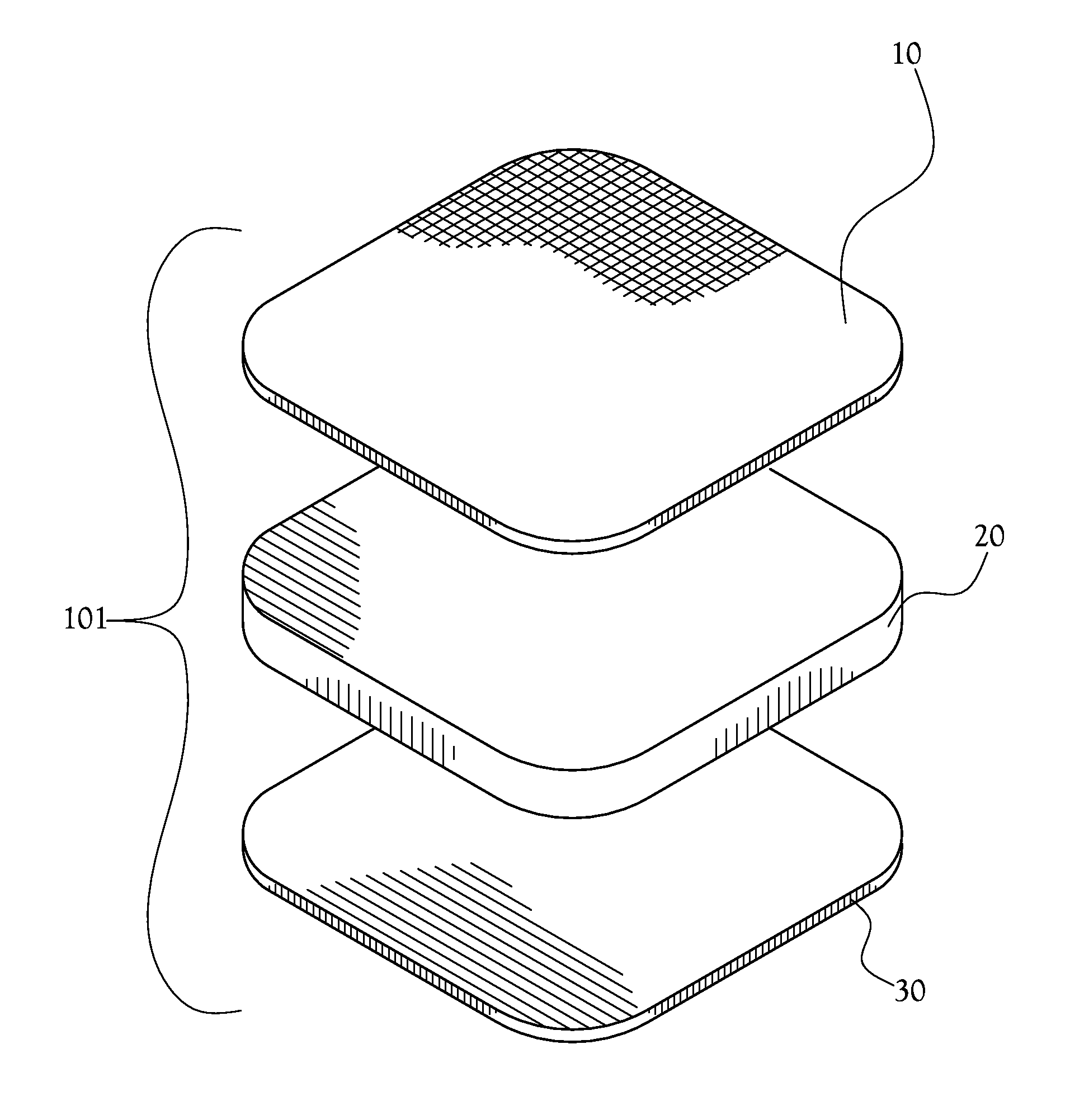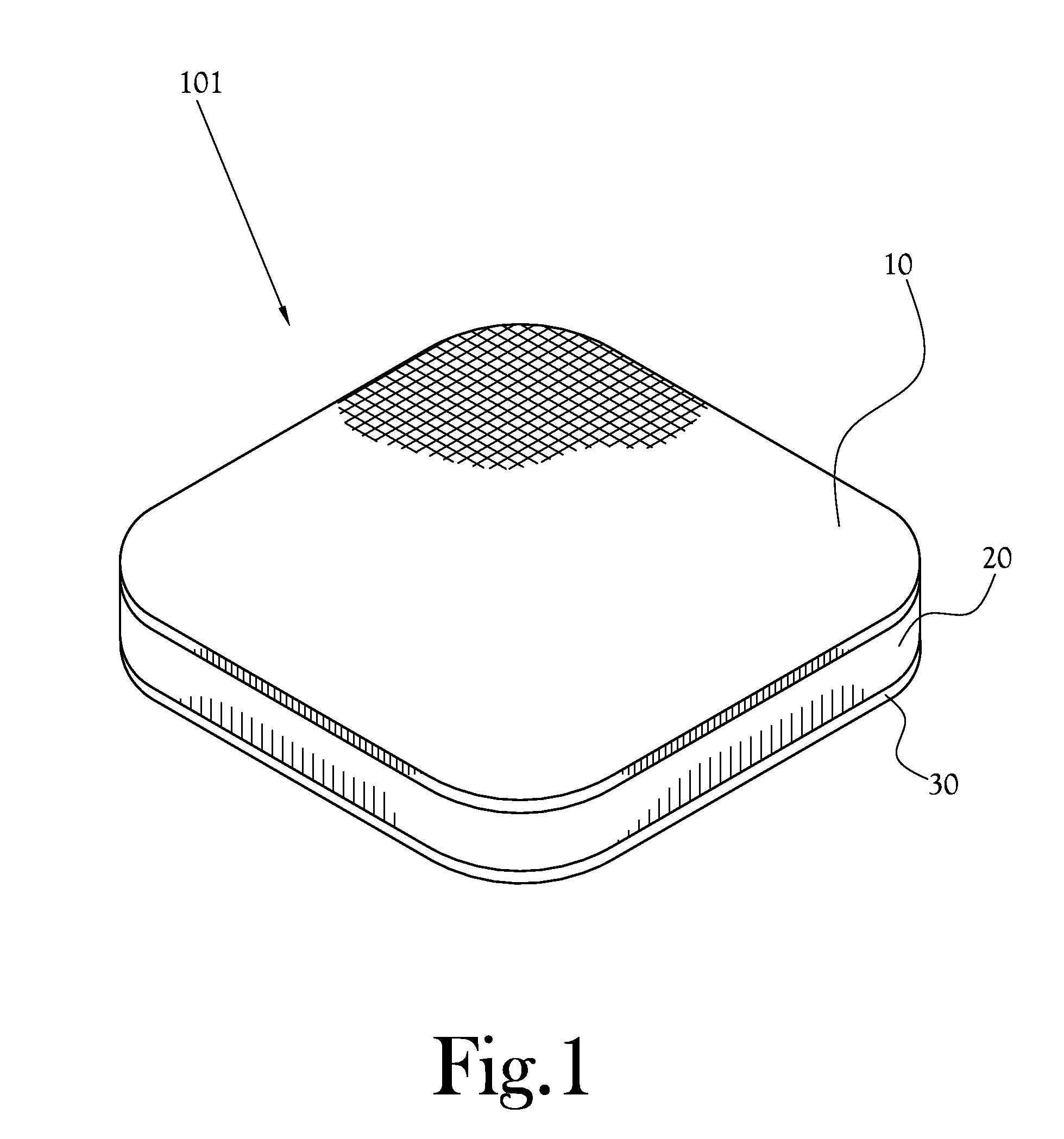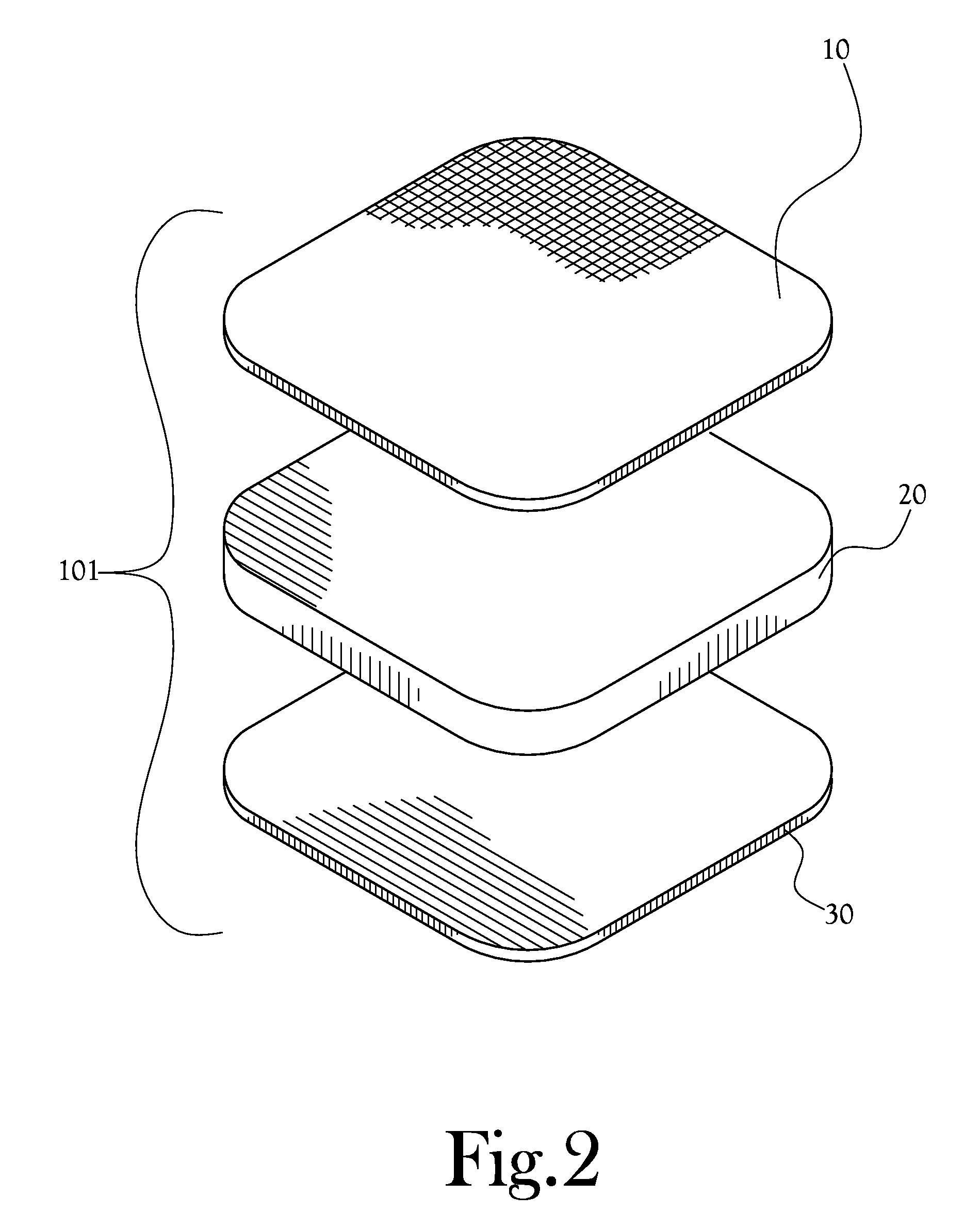Silver-Embedded Foam Dressing
a foam dressing and silver-embedded technology, applied in the field of antimicrobial or antibacterial dressings, can solve the problems of heightened infection risk of open wounds, scarring degree, embarrassing or otherwise troubling scarred people, etc., to prevent infection from gaining a foothold, prevent the appearance of scar tissue, and prevent the effect of infection
- Summary
- Abstract
- Description
- Claims
- Application Information
AI Technical Summary
Benefits of technology
Problems solved by technology
Method used
Image
Examples
Embodiment Construction
[0018]The present invention includes, in some embodiments, a dressing that comprises a first layer or contact layer for contacting a wound, with the first layer including silicone; a foam-based hydrophilic middle layer that carries a metal-based antimicrobial or anti-infection agent (hereinafter “antimicrobial agent”); and a backing layer that prevents moisture within the dressing from escaping into the air through evaporation.
[0019]In some embodiments, the contact layer comprises a porous mesh of polyethylene fibers, with some or all of the fibers being coated with silicone. The middle layer comprises a foam fabricated from a hydrophilic polyurethane or comparable material. The foam middle layer includes a metal-based antimicrobial agent that undergoes a controlled release when the middle layer comes into contact with moisture. The backing layer comprises a thin film formed from a moisture-impermeable or non-porous material; this film forms a moisture-layer seal that acts as a mois...
PUM
 Login to View More
Login to View More Abstract
Description
Claims
Application Information
 Login to View More
Login to View More - R&D
- Intellectual Property
- Life Sciences
- Materials
- Tech Scout
- Unparalleled Data Quality
- Higher Quality Content
- 60% Fewer Hallucinations
Browse by: Latest US Patents, China's latest patents, Technical Efficacy Thesaurus, Application Domain, Technology Topic, Popular Technical Reports.
© 2025 PatSnap. All rights reserved.Legal|Privacy policy|Modern Slavery Act Transparency Statement|Sitemap|About US| Contact US: help@patsnap.com



